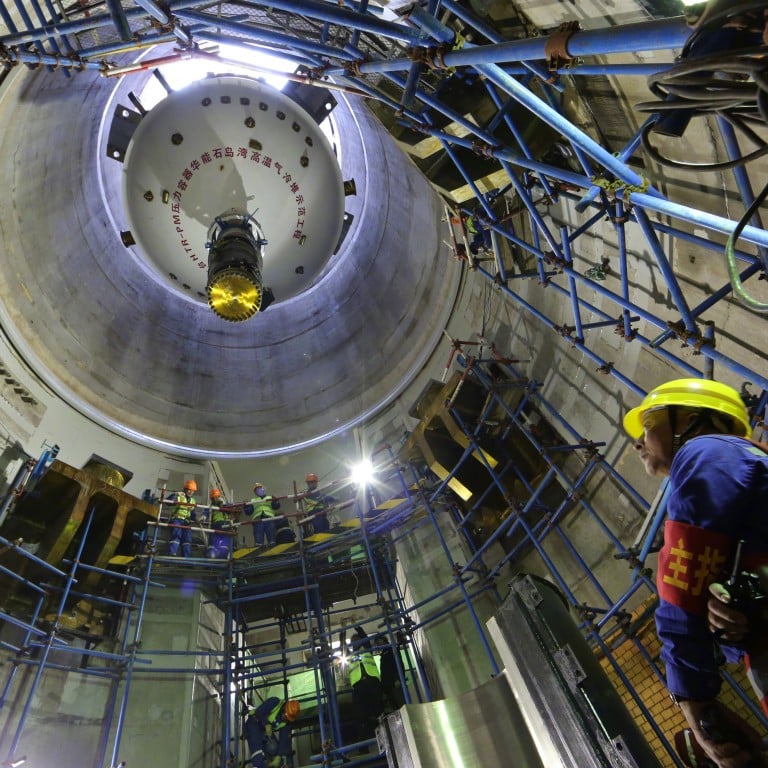
How Chinese scientists are extracting uranium from seawater faster than ever
- Team’s electrochemical approach is at least three times faster than existing methods, study finds
- China is building more nuclear plants than any other country, but relies on imports to fuel them
Chinese scientists say they have found a way to efficiently extract uranium – the heavy metal used to fuel nuclear reactors – from seawater using electricity.
The team from Northeast Normal University in Changchun, Jilin province developed an electrode to capture the uranium through electrochemical reactions.
They say this is at least three times faster than existing methods, and is effective at shielding against impurities in the seawater – meaning it could be suitable for large-scale applications.

The researchers, led by Associate Professor Zhao Rui and Professor Zhu Guangshan, published the results of their groundbreaking study in the peer-reviewed journal ACS Central Science on December 13.
China is building more nuclear power plants than any other country, but the country’s uranium ore is low grade so it relies on imports to fuel its reactors.
The ability to extract uranium from seawater could be a game changer for China’s – and the world’s – energy structure, and progress on the technology is closely watched by policymakers and the nuclear industry.
Uranium has been an essential element for nuclear power since 1942, when physicist Enrico Fermi built the first nuclear reactor in Chicago.
It has traditionally been extracted from terrestrial rock formations, but the finite nature of these deposits has led scientists to seek alternative sources of uranium.
Key among them is the oceans, which hold an estimated 4.5 billion tonnes of uranium – nearly a thousand times more than land-based reserves, according to the Nuclear Energy Agency.
Chinese nuclear firm hails step forward in quest to build ‘artificial sun’
But extracting uranium from seawater is an immensely challenging task due to the extremely low concentration – at 3.3 parts per billion – and the presence of interfering ions in a complex marine environment.
The difficulty of this task is akin to finding a gram of salt in 300,000 litres of fresh water, if not more challenging.
To tackle the challenge, the team created an electrode by coating a carbon fibre woven fabric with two monomers – molecules that can react with other molecules to form structures like polymers. They were polymerised to create an electrode material with microscopic bumps and depressions, which are known as porous aromatic frameworks, or PAFs.
PAFs have sites for catalysis, to turn uranium ions into uranium compounds, and sites for adsorption to collect the compounds. The porous nature of the carbon fibre fabric also helps to trap uranium ions.
According to the study, this electrochemical method could improve the capacity and rate of extraction compared to the more traditional method of physicochemical adsorption.
“Uranium extraction with PAF electrodes (PAF-E) shows higher uptake and faster kinetics compared to physicochemical adsorption,” Zhu said in the paper.
China gives green light to its first thorium-powered nuclear reactor
In tests conducted on water from the Bohai Sea, the team used the electrode to extract 12.6 milligrams of uranium per gram of material over 24 days, with saturation still not reached at that point, according to the study.
The scientists said that was better than most other reported uranium extraction methods.
The tests also suggested that the electrode was stable through multiple extraction cycles, despite the presence of competing metal ions in the seawater.
“This good selectivity was attributed to the alternating voltage applied to the electrodes, which repelled unbound ions,” Zhu said.
He said the electrodes could offer a more effective way to extract uranium from seawater and that the study had improved understanding of the mechanisms behind electrochemical uranium extraction.
The study was funded by the National Key R&D Programme of China and the National Natural Science Foundation of China.

